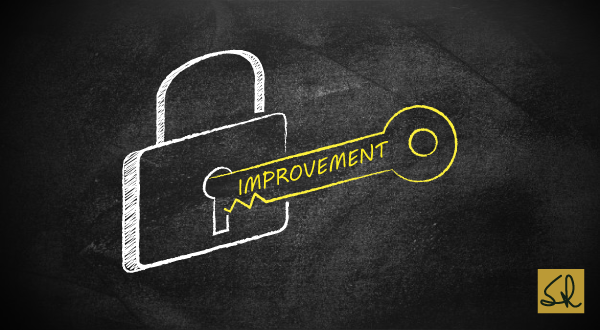STRUCTURED QUALITY IMPROVEMENT: LOCKING THE IMPROVEMENT

I believe: Quality Improvement Teams must make a commitment to work with facts rather than opinion.
As discussed, chronic problems can be solved using a structured quality improvement methodology.
There are four key steps in the quality improvement methodology:
1. Problem Definition – Quality Capsule 5
2. Problem Diagnosis – Quality Capsule 6
3. Problem Remedy – Quality Capsule 7
4. Locking the Improvement.
Here are a few insights:
- Problem solving in the context of quality control is different from problem solving in quality improvement
- In quality control, the goal of problem solving is to re-establish the status quo
- In quality improvement, the goal is to achieve a breakthrough in performance
- “In God we trust. All others bring data”.
Locking the Improvement
Locking the Improvement is the fourth step in the quality improvement methodology. This is critical to reap a breakthrough in performance.
- Check Performance
- Monitor Control System
1. Check Performance:
Implementation of a solution, no matter how painstaking the design and testing, does not guarantee breakthrough in performance. The operating departments and quality improvement team must collect and analyse data on the performance of the new process. The quality improvement project is not closed until the breakthrough in results has been confirmed with data.
Quality Tools: Flow Diagram; Data Gathering; Graphs and Charts; Stratification; Pareto Analysis; Histograms; Scatter Diagrams; Box Plots.
2. Monitor Control System:
Finally, the problem has been solved, and a new level of quality control has been established. In order to maintain the breakthrough in performance, the operating departments must continually monitor the new control system.
Quality Tools: Flow Diagram; Data Gathering; Graphs and Charts; Stratification; Histograms; Box Plots.
With this we have completed the four steps for Structured Quality Improvement.
I will present a Summary of Structured Quality Improvement in my next edu-blog on Wednesday, 2 September. Thereafter we will discuss Quality Tools.
Now, refer to the question I had asked last week in Quality Capsule 7 Which is the most frequently used quality tool?
I am sure you have all converged on Flow Diagram. And you are absolutely right. The Flow Diagram, if mapped as-is for a specific process, and not how the quality manual has it documented, is the universal quality tool for all steps of Structured Quality Improvement. It is also an excellent facilitation tool to get a common understanding of a process by a quality improvement team.
My question to you this week is: What is the greatest pitfall in problem solving?
Additional References:
CQIA
Quality Improvement Tools
Problem Solving Pro

Yes Sir, I did…n fully aligned…
Sir, Yes I had read it..I’m completely aligned….
Nice information you are sharing Sir, it helps me real time.
Thank you so much!
Thank you Vijaysing for your positive feedback
It’s jumping in to the pool without knowing it’s depth… Without a correct problem statement… Initiating problem diagnosis
Dr Krishnarao, May I request you to read Quality Capsules 5 / 6 / 7 /8 as a set.
In Quality Capsule 5 I have underlined that Problem Definition is the most important step in Problem Solving.